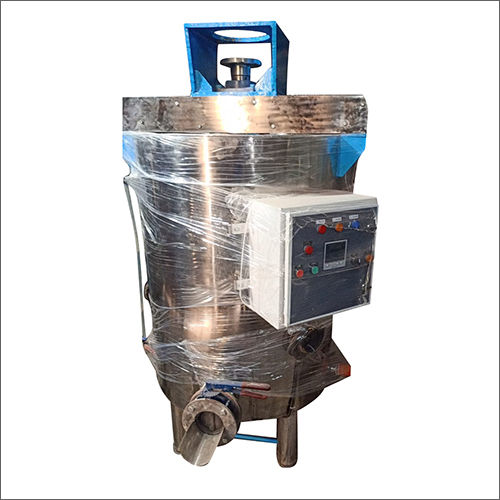
Industrial Ball Mill And Holding Tank
Product Details:
- Usage Industrial
- Size Different Sizes Available
- Condition NEW
- Grade First Class
- Click to View more
Industrial Ball Mill And Holding Tank Price And Quantity
- 10 Unit
- 95000 INR/Unit
Industrial Ball Mill And Holding Tank Product Specifications
- NEW
- First Class
- Different Sizes Available
- Industrial
Industrial Ball Mill And Holding Tank Trade Information
- Cash Advance (CA)
- 5000 Unit Per Month
- 10 Days
- All India
Product Description
The essential parts and operations of an industrial ball mill consist of:
Shell: The ball mill's cylindrical shell is often constructed of steel or another material that is resilient to the rotational forces and impacts that occur during the grinding process. To prevent abrasion, the shell is coated with materials that are resistant to wear, such as rubber or manganese steel.
Grinding media are fed to the ball mill in the form of steel balls or ceramic beads in a range of sizes and densities. The grinding media aid in the mixing and blending of the ingredients in addition to crushing and grinding the material.
Rotation: As the ball mill revolves around its horizontal axis, the mill's grinding media tumble and cascade, creating a grinding motion. The grinding process can be managed by adjusting the rotation's speed and direction.
Size reduction: A feed funnel feeds the material to be ground into the ball mill. The material is crushed and ground by the grinding media as the mill rotates, resulting in smaller particle size. By adjusting variables like grinding time, speed, and the size and density of the grinding media, the end product can be made to the desired fineness.
There are several uses for industrial ball mills, including:
- Ball mills are frequently used in the mining and mineral processing industries to grind ores and minerals and release valuable minerals from the gangue material.
- Building materials and cement: Gypsum, cement clinker, and other building materials are ground in ball mills to create cement and other construction products.
- Chemical industry: Different chemicals, pigments, and colours are ground and blended in ball mills.
- Pharmaceuticals: Particle size reduction and ingredient blending of medicinal substances are done in ball mills.
A holding tank is a container used to temporarily store liquids, slurries, or other materials. It is also known as a storage tank or vessel. After the product has been processed in the ball mill, it may be kept in a holding tank during industrial procedures. The material can be stored, allowed to settle, or given additional treatment in the holding tank before moving on to the packing stage or another stage of processing.
Depending on the individual application and output needs of the industry, the ball mill's design, capacity, and specifications can change.
FAQ
1. What are a holding tank and an industrial ball mill?
Ans - A type of industrial production equipment used for grinding and mixing commodities including minerals, chemicals, and feedstocks is called an industrial ball mill and holding tank. Various materials can be ground up in the mill and kept in the tank for use or additional processing.
2. What are the advantages of employing a holding tank and an industrial ball mill?
Ans - Holding tanks and industrial ball mills offer a practical way to grind and retain materials for future use. They provide quick and effective grinding results and require less room for the mill and tank. They are adaptable tools for any industrial context since they may be utilised with a wide range of various materials.
3. How long are a holding tank and an industrial ball mill good for?
Ans - The size and frequency of use of an industrial ball mill and holding tank will determine how long they will last. Generally speaking, a machine can last for many years if it is used properly.
4. What safety measures must be followed when using a holding tank and industrial ball mill?
Ans - When using an industrial ball mill and holding tank, it's crucial to follow safety regulations. When working the machinery, always put on safety gear, such as gloves and safety glasses. Before and after each usage, make sure to check the mill and tank, and any damaged components should be replaced right away.
5. How much upkeep is necessary for a holding tank and industrial ball mill?
Ans - An industrial ball mill's and holding tank's optimal operation and safety depend on routine maintenance. This include checking the appliance both before and after each use, checking all of the hoses and belts, and replacing any worn out or broken components. This upkeep can be carried out every few months, depending on the size of the mill and tank and how frequently they are used.
 |
ANIKA PLANTS AND EQUIPMENTS INDUSTRIES
All Rights Reserved.(Terms of Use) Developed and Managed by Infocom Network Private Limited. |